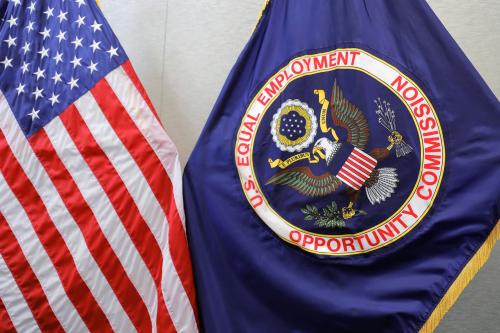Executive Summary
Two-thirds of Americans have broadband Internet access in their homes.[1] But because of poor infrastructure or high prices, the remaining third of Americans do not. In some areas, broadband Internet is plainly unavailable because of inadequate infrastructure: More than 14 million Americans – approximately 5 percent of the total population – live in areas where terrestrial (as opposed to mobile) fixed broadband connectivity is unavailable.[2] The effects of insufficient infrastructure development have contributed to racial and cultural disparities in broadband access; for example, terrestrial broadband is available to only 10 percent of residents on tribal lands.[3]
Even where terrestrial broadband connectivity is available, however, the high price of broadband service can be prohibitive, especially to lower income Americans. While 93 percent of adults earning more than $75,000 per year are wired for broadband at home, the terrestrial broadband adoption rate is only 40 percent among adults earning less than $20,000 annually.[4] These costs also contribute to racial disparities; almost 70 percent of whites have adopted terrestrial broadband at home, but only 59 percent of blacks and 49 percent of Hispanics have done the same.[5]
America’s wireless infrastructure is better developed, but many Americans still lack wireless broadband coverage. According to a recent study, 3G wireless networks cover a good portion of the country, including 98 percent of the United States population,[6] but certain states have dramatically lower coverage rates than others. For example, only 71 percent of West Virginia’s population is covered by a 3G network.[7] Wireless providers will likely use existing 3G infrastructure to enable the impending transition to 4G networks.[8] Unless wireless infrastructure expands quickly, those Americans that remain unconnected may be left behind.
Though America is responsible for the invention and development of Internet technology, the United States has fallen behind competing nations on a variety of important indicators, including broadband adoption rate and price. According to the Organization for Economic Cooperation and Development’s survey of 31 developed nations, the United States is ranked fourteenth in broadband penetration rate (i.e. the number of subscribers per 100 inhabitants); only 27.1 percent of Americans have adopted wired broadband subscriptions, compared to 37.8 percent of residents of the Netherlands.[9]
America also trails in ensuring the affordability of broadband service. The average price for a medium-speed (2.5Mbps-10Mbps) Internet plan in America is the seventeenth lowest among its competitor nations. For a medium-speed plan, the average American must pay $38 per month, while an average subscriber in Japan (ranked first) pays only $22 for a connection of the same quality.[10]
The National Broadband Plan (NBP), drafted by the Federal Communication Commission and released in 2010, seeks to provide all Americans with affordable broadband Internet access.[11] Doing so will not be cheap; analysts project that developing the infrastructure necessary for full broadband penetration will require $24 billion in subsidies and spending.[12] President Obama’s stimulus package has already set aside $4.9 billion to develop broadband infrastructure,[13] and some small ongoing federal programs receive an annual appropriation to promote broadband penetration.[14] However, these funding streams will only account for one-third of the $24 billion necessary to achieve the FCC’s goal of full broadband penetration.[15] Moreover, developing infrastructure alone is not enough; many low-income Americans are unable to afford Internet access, even if it is offered in their locality.
To close this funding gap and to make broadband more accessible, the National Broadband Plan proposes to transform the Universal Service Fund – a subsidy program that spends $8.7 billion every year to develop infrastructure and improve affordability for telephone service – into a program that would do the same for broadband Internet.
[1]
Federal Communications Commission, Connecting America: The National Broadband Plan 23 (2010) [hereinafter National Broadband Plan].
[2]
Id. at 10.
[3]
Id.
[6]
Id. at 146.
[7]
Id.
[8]
Id.
[9]
Organization for Economic Cooperation and Development, OECD Broadband Portal, OECD.org, (table 1d(1)) (last accessed Jan. 28, 2011).
[10]
Id. (table 4m) (last accessed Jan. 28, 2011).
[11]
National Broadband Plan, supra note 1, at 9-10.
[12]
Id. at 136.
[13]
Id. at 139.
[14]
Id.
[15]
Id.
The Brookings Institution is committed to quality, independence, and impact.
We are supported by a diverse array of funders. In line with our values and policies, each Brookings publication represents the sole views of its author(s).



